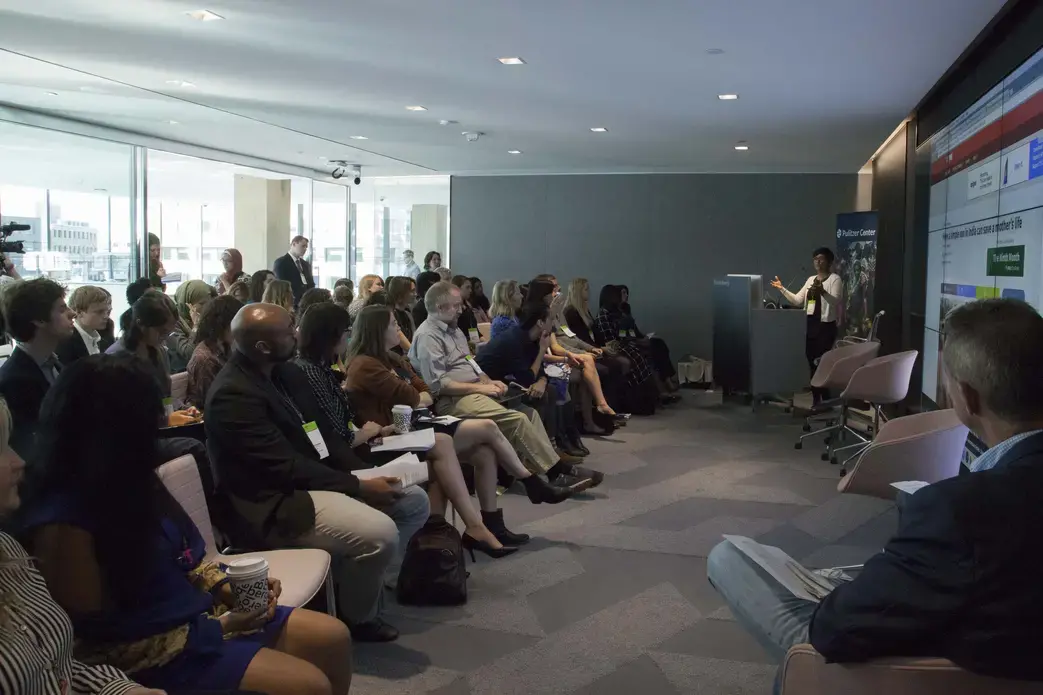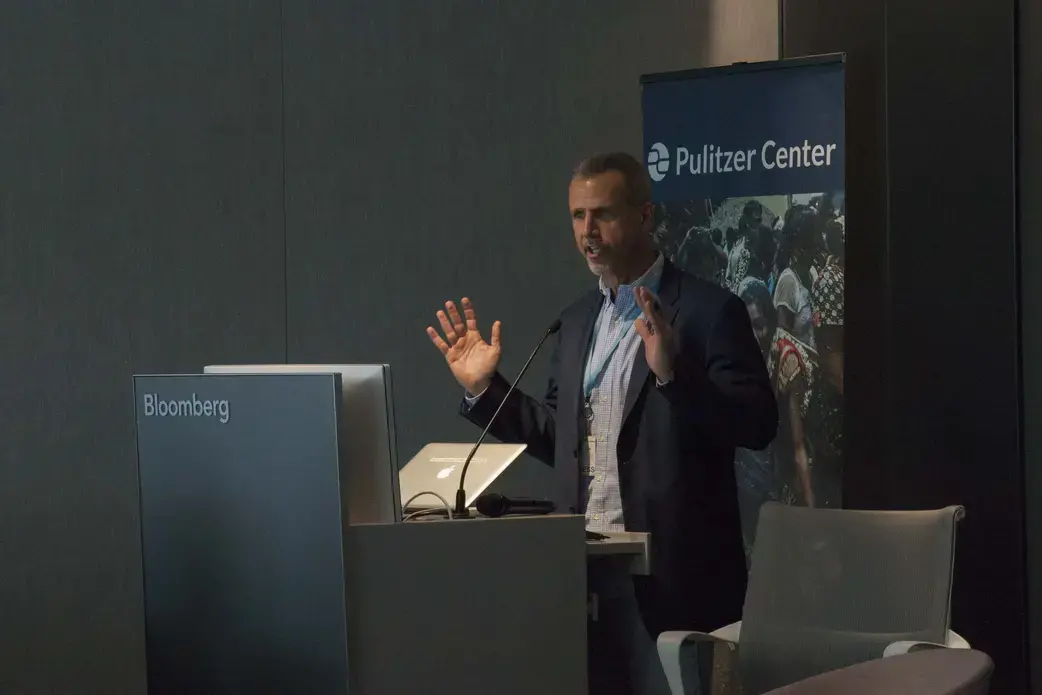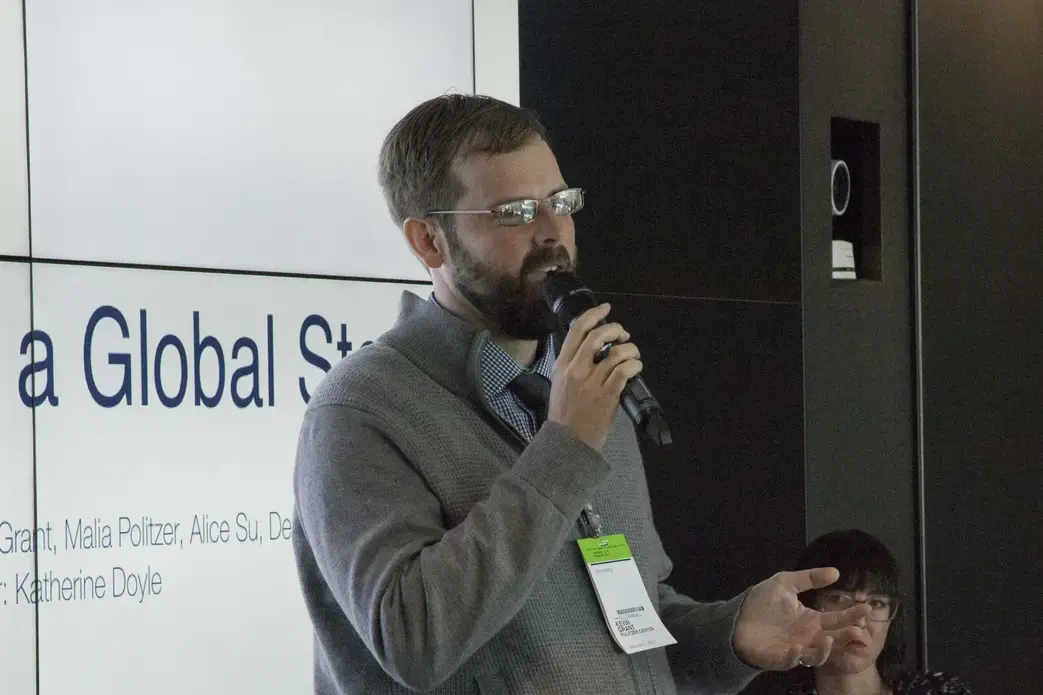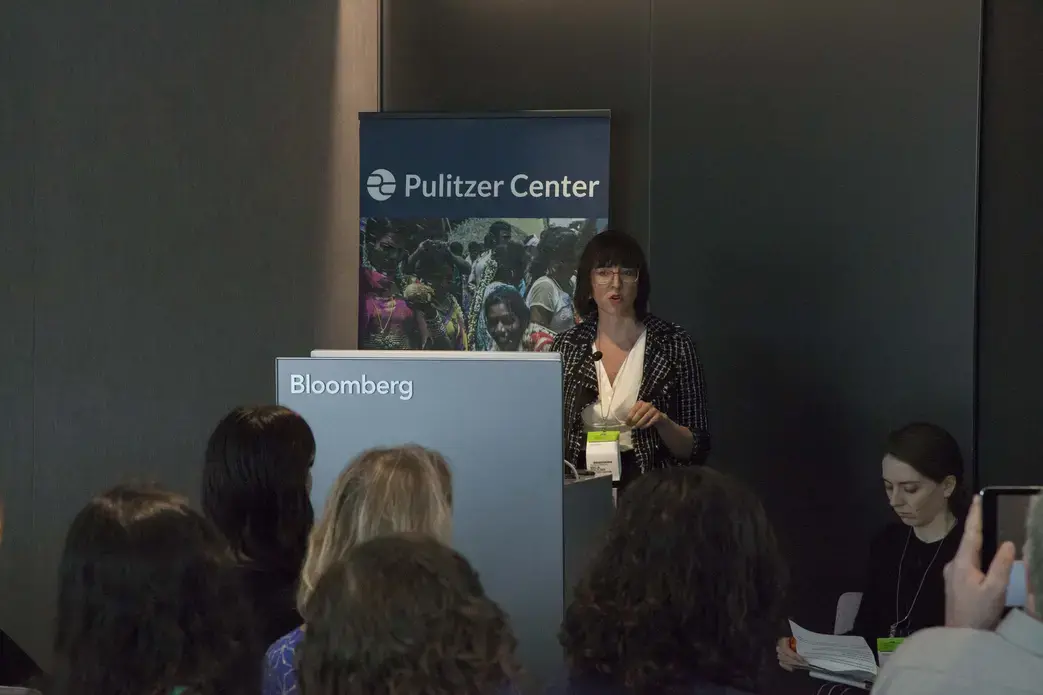Pulitzer Center Update October 30, 2017
Reporters and Editors on "The Way We Tell Stories" and "How to Pitch a Global Story"
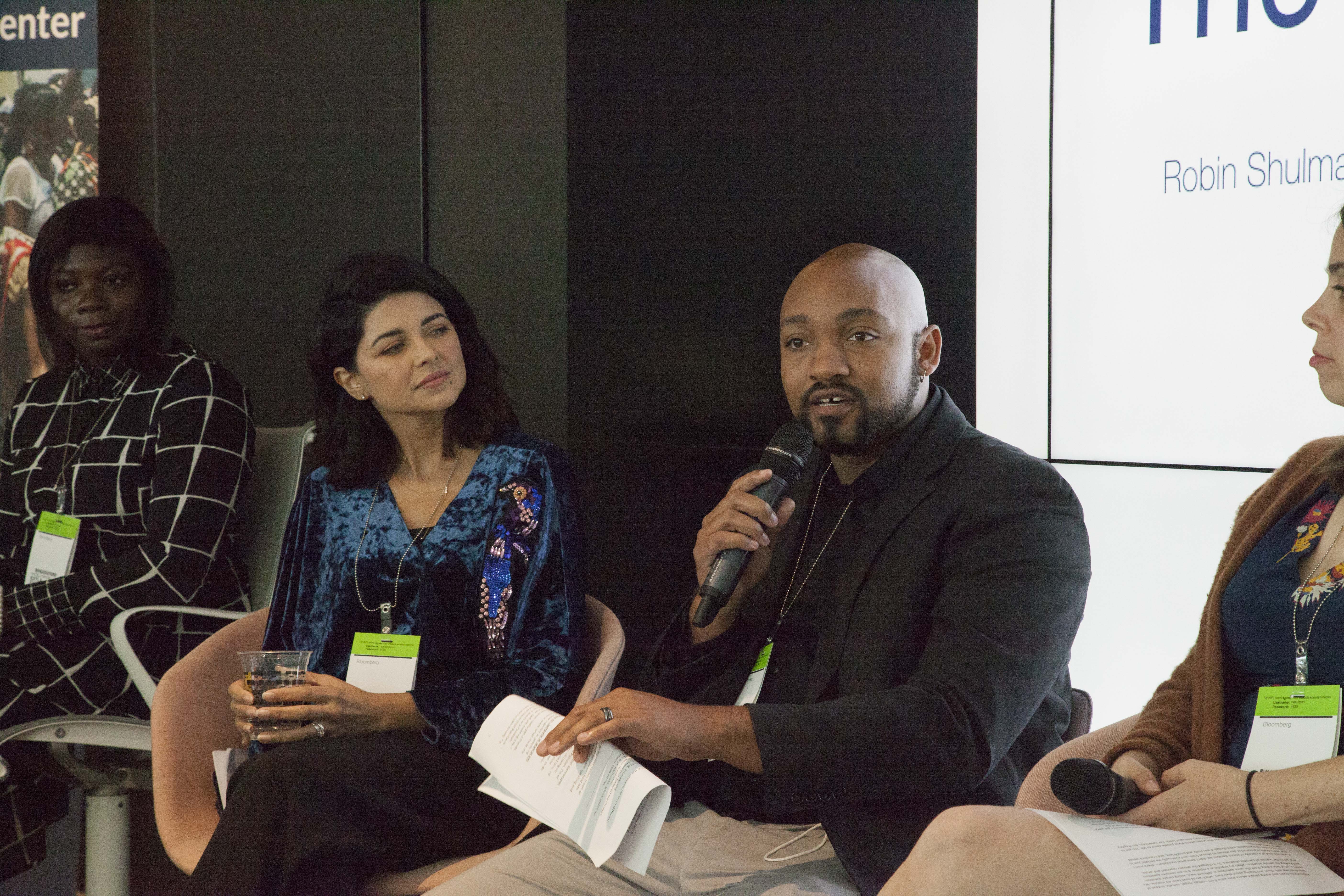
Pulitzer Center student fellows met at Bloomberg News to hear from 12 reporters, editors, and Pulitzer Center grantees, who spoke on “The Way We Tell Stories” and “How to Pitch a Global Story” panels.
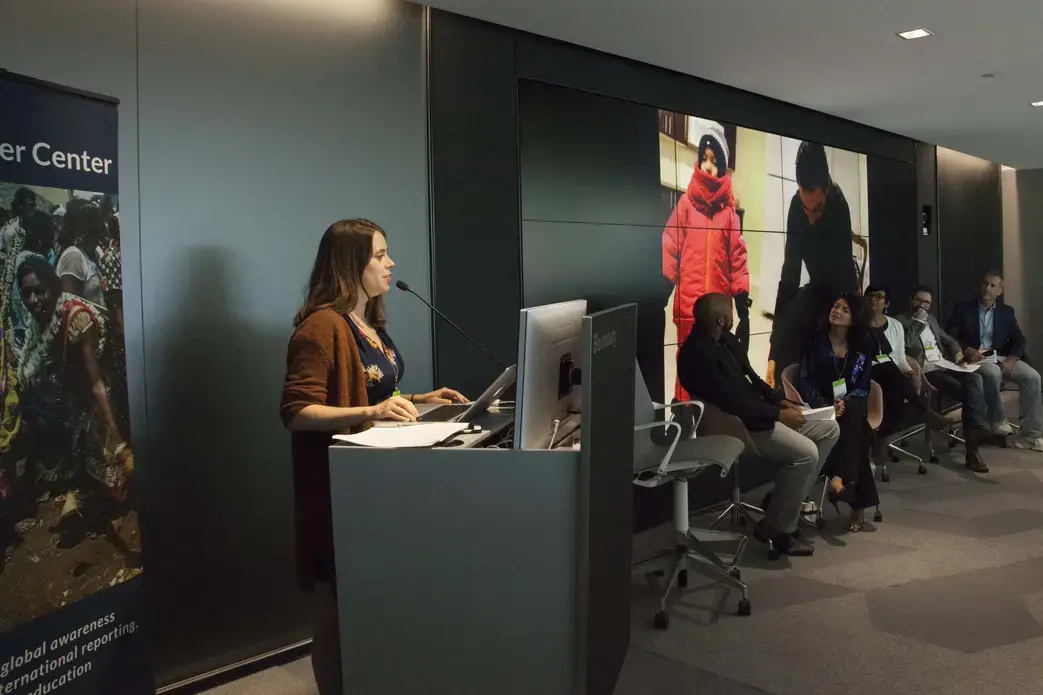
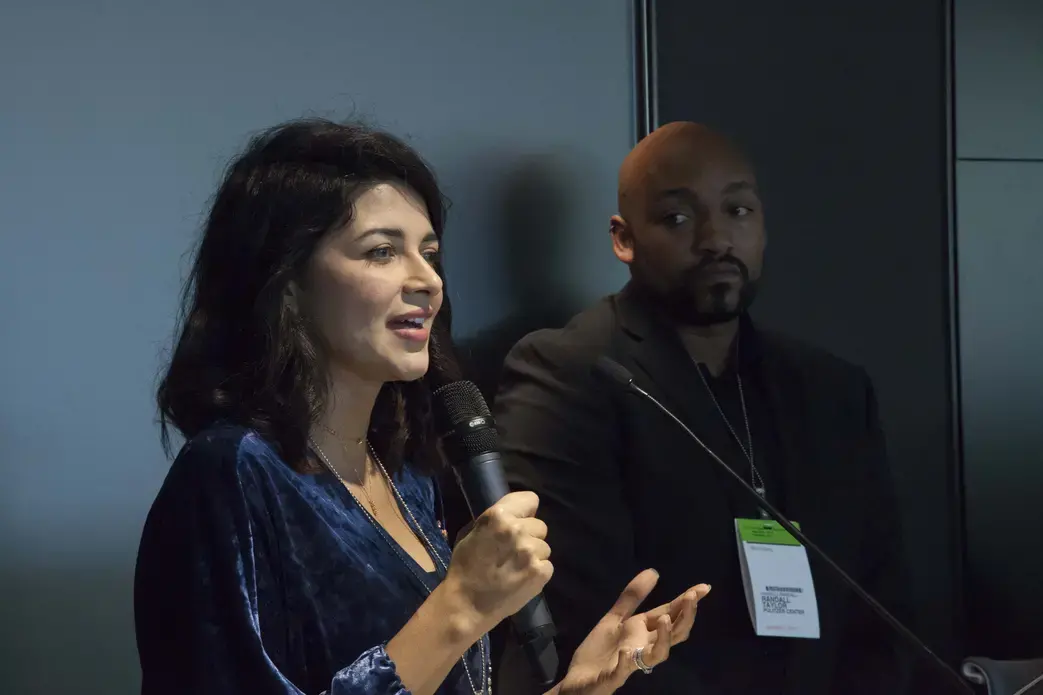
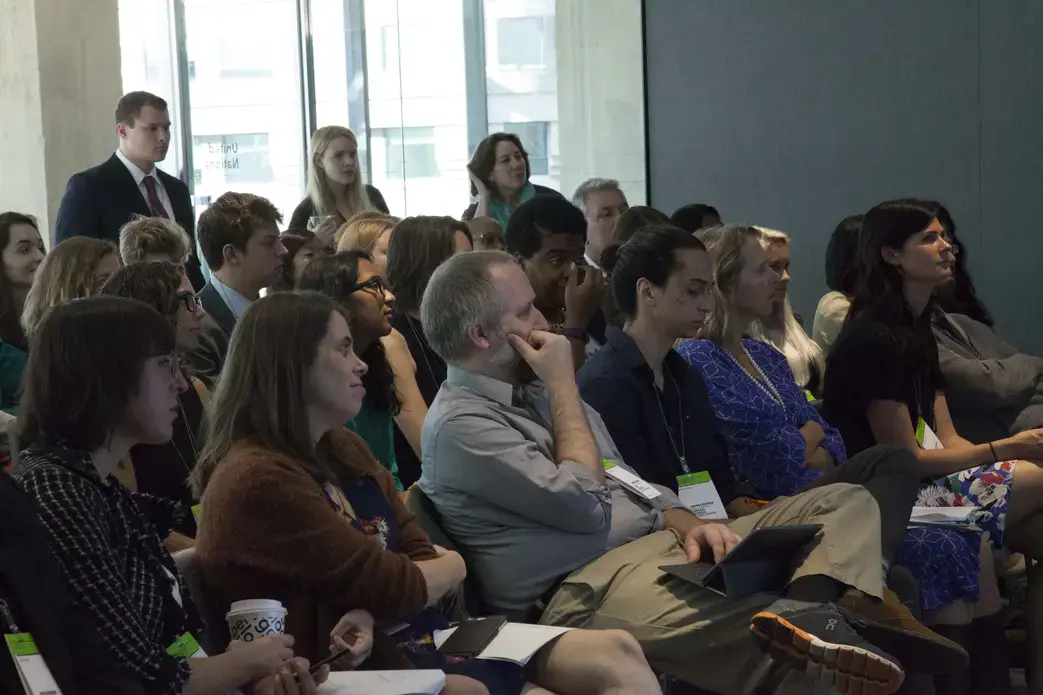
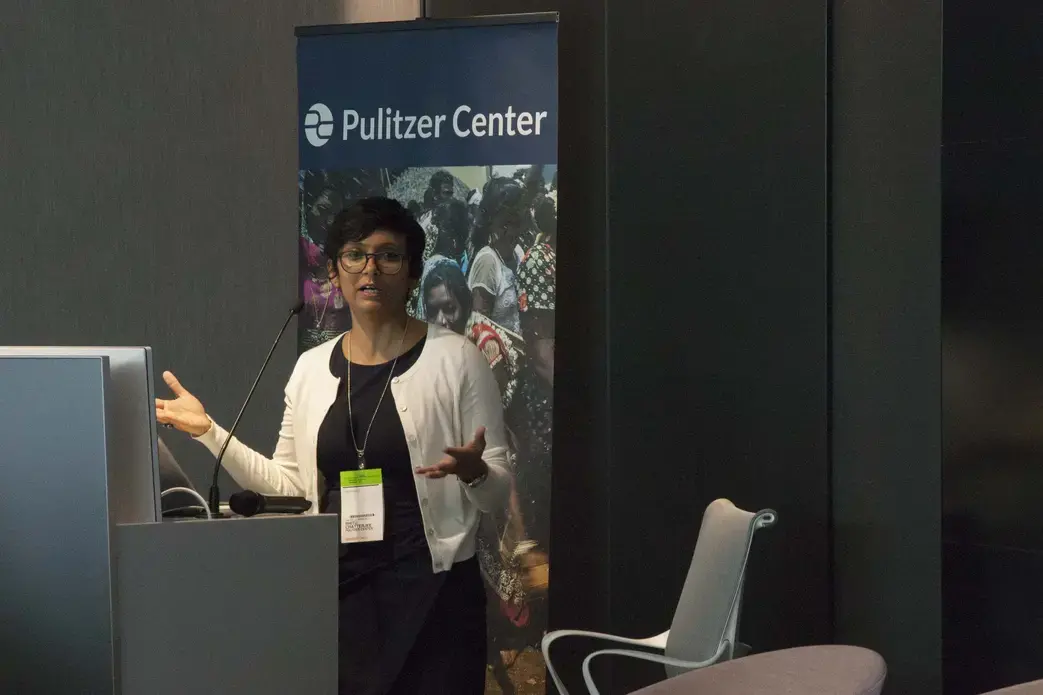






The Way We Tell Stories
On a panel moderated by Campus Consortium coordinator Kayla Sharpe, Pulitzer Center grantee Robin Shulman kicked off the conversation by presenting her project on the private sponsorship of Syrian refugees by families in Canada and Iowa. She spoke to the challenges of telling a story that involves complex immigration policy alongside human suffering and joy. “What the war had taken away, this sponsorship program brought back: that people are good,” Shulman explained. “I wanted to convey that in my reporting, too.” To fully humanize her subjects, she incorporated photography and video into her writing, finding “a certain power in being able to introduce your subjects without an intermediary.”
Voice of America video journalists and producers Ayesha Gilani Taylor and Randall Taylor both discussed their nontraditional paths into the field. Randall began by studying pre-med, knowing only that he wanted to help people, and through volunteer experiences found his passion for journalism. “Nothing connects people so much with another person as seeing them live out their lives on camera,” he said, playing a reel that zoomed from a Native American drumming circle to a hip-hop studio, from a veteran’s home in West Virginia to a primary school in Kenya.
Ayesha, on the other hand, came to journalism through beauty pageants. When she won a pageant that aimed to dispel stereotypes about Pakistani women, she had the opportunity to go abroad for a month and, crossing traditional religious and national barriers, became close friends with an Israeli contestant. “One positive interaction can really change people’s minds,” she realized, and so she decided that she wanted to connect people by telling their stories.
Following these highly visual presentations, grantee Uri Blau began with a slide of tax forms. An investigative journalist whose current project traces how tax-exempt U.S. dollars fund Israeli settlements in the West Bank, Blau spends much of his time winnowing enormous quantities of information down, “making it both as accessible and as relevant to the reader as possible.” After condensing hundreds of documents the public is unlikely to read into a few short paragraphs, he fashions them into pithy tweets, press releases, and video clips. In addition to finding and telling important stories, Blau highlighted the importance of looking for ways to disseminate them broadly.
Grantee Rhitu Chatterjee arrived at journalism after recognizing she had a greater passion for storytelling than for “studying little zebrafish embryos” in her genetics PhD program. Now an accomplished radio journalist, Chatterjee talked about how she grabs the attention of an audience that is always “doing at least two other things” by examining science, social, and political issues through the individuals impacted by them. Despite her focus on radio, Chatterjee is also a writer and has done video reports for NPR. “These days, we no longer have the luxury of working on and finessing one medium,” she advised students. “We all have to be sort of a one person show.”
Bernie Kohn, a managing editor at Bloomberg, closed the panel with a different background story: “I’ve actually been on a straight-line path to journalism since the seventh grade,” he said. Kohn traced the arc of Bloomberg’s evolution from traditional journalism to contemporary data visualizations and news blasts, but emphasized one rule of storytelling that remains unchanged: “You basically have four words in a headline to grab the attention of your readers.”
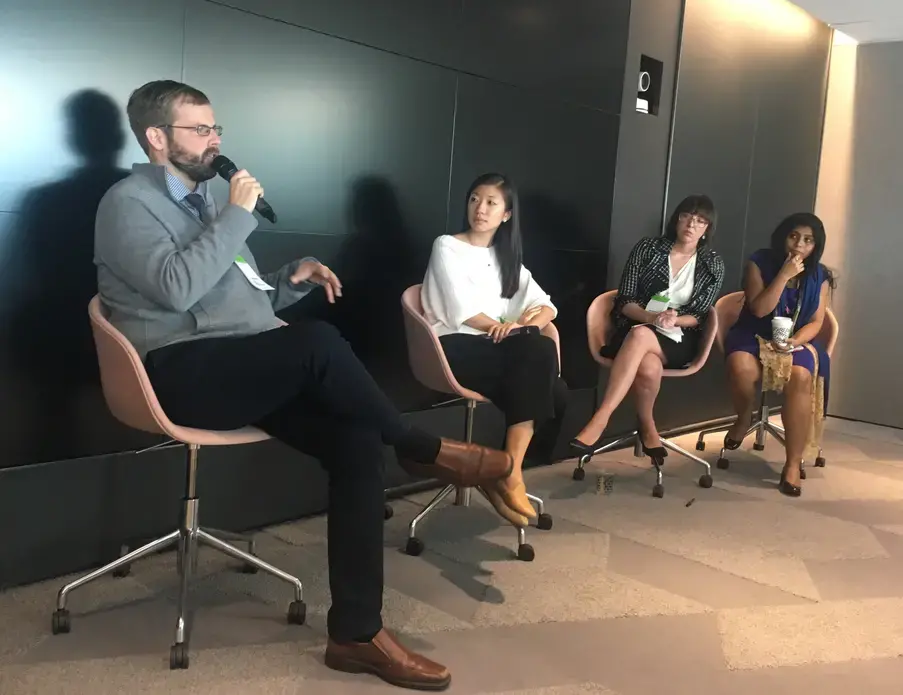
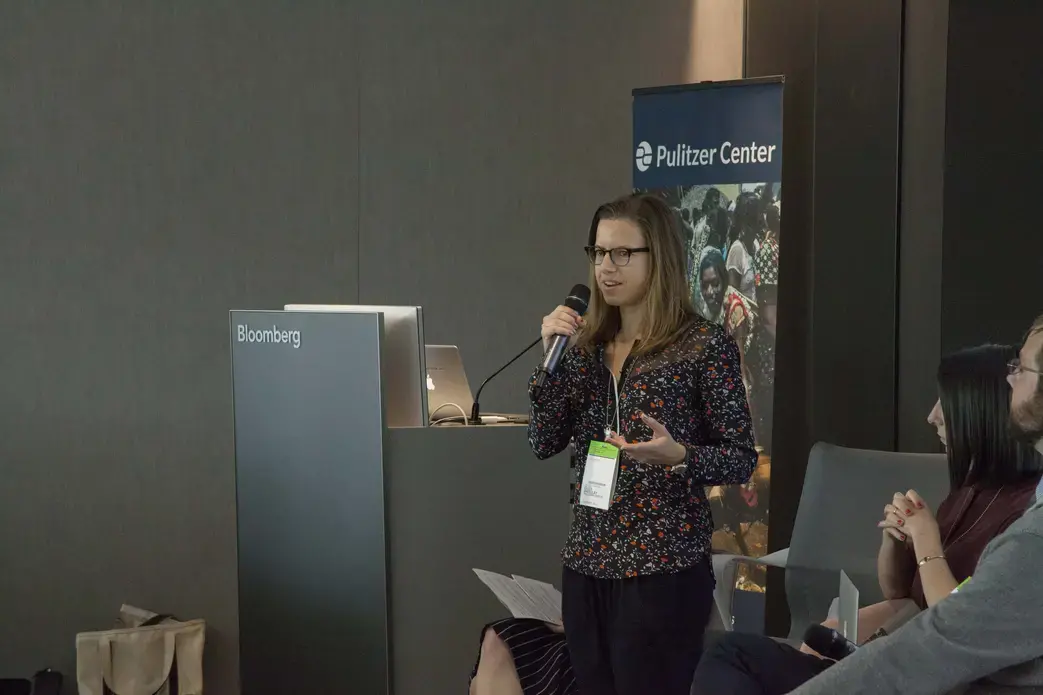
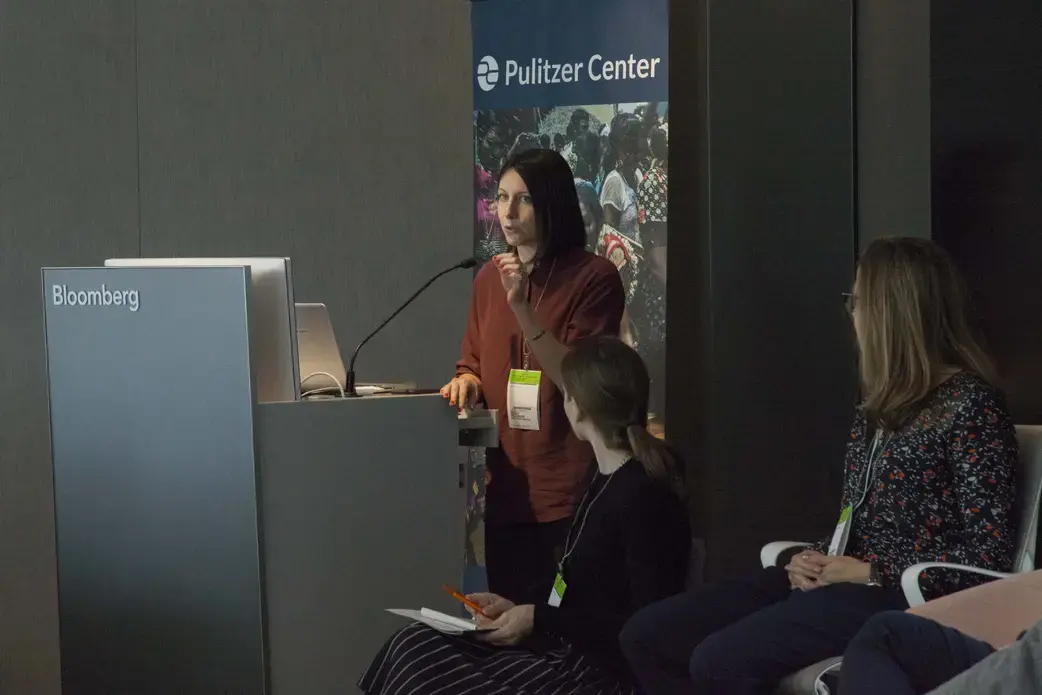
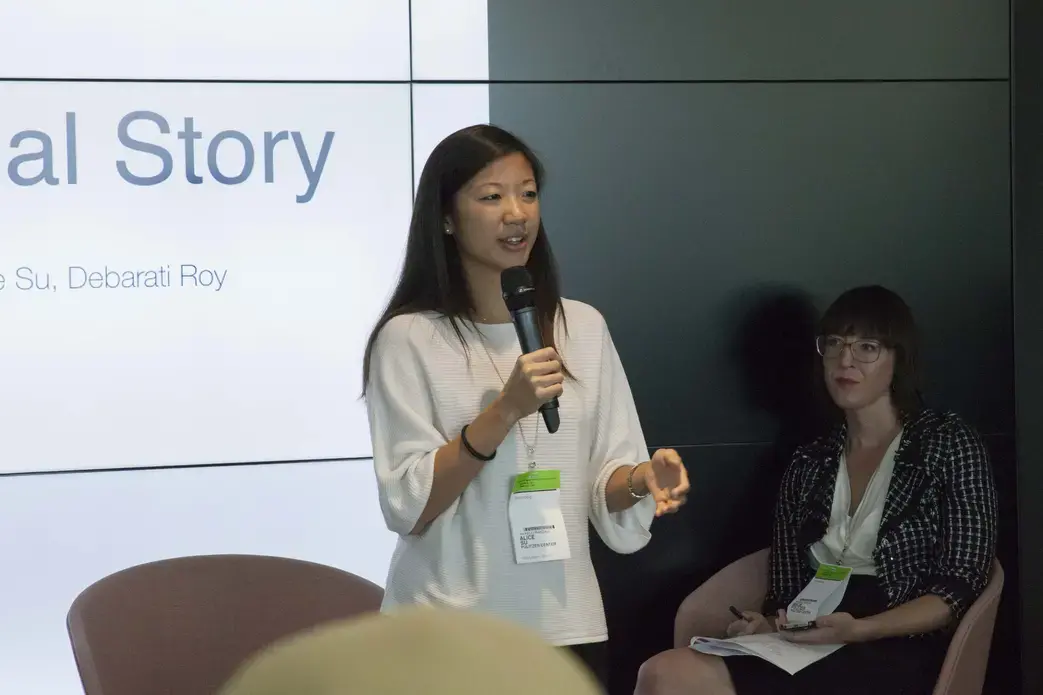






How to Pitch a Global Story
For the second panel of journalism professionals, moderated by associate editor Katherine Doyle, the Pulitzer Center gathered a group with diverse career focuses and paths to give advice on something at the fore of every young reporter’s mind: how to pitch your story.
The panel comprised Eliza Barclay, editor at Vox and former reporter/editor at NPR; Emily Feldman, freelance journalist and Pulitzer Center grantee who reported on Yazidis persecuted by ISIS militants; Kevin Grant, co-founder and executive director of the GroundTruth Project; Alice Su, freelance journalist and grantee who reports on migration and identity in the Middle East and China; Malia Politzer, freelance journalist, migration scholar, and grantee who reported on transcontinental refugee exploitation; and Debarati Roy, deputy leader of Bloomberg’s Oil Trading Americas team.
1. Have a great story. “There’s no substitute,” urged Grant. Panelists agreed that a reporter can only convince editors that their story is important if they believe it themselves. But that’s only the first step.
2. Contextualize your story. Stories go to print when they are timely and relevant to the target audience, and the pitch has to communicate both. “Even if it’s an untold story,” said Barclay, “think about how to contextualize your pitch in a hot topic of the moment,” giving editors a point of reference—and a selling point. Su agreed, but also encouraged young reporters to tell “unusual stories” to set themselves apart. Politzer reminded students to take publication cycles into account, especially for longform pieces: “You have to say not just why it’s relevant now, but why it will be in two months.”
When pitching international stories, Feldman emphasized the need to “make the case for how this story has global implications.” “Every single thing has a global impact,” Roy added. “No more is any event siloed in one part of the world,” but it’s up to the journalist to connect the dots for readers.
3. Pitch yourself. So you’ve got a great story, and you’ve convinced an editor that it needs to be told. Now, why are you the person to do the job? “I found that what worked was to fake it till I made it,” said Su, who recommended claiming the “journalist” title without an “aspiring” qualifier.
Feldman advised making the personal pitch specific to the story. “Before I had any clips,” Politzer added, “I tried to stick to things that I knew really well. There’s always a way to package your particular expertise and experiences.” Barclay noted that such pitches can be critical for a publication that values point of view. “As an editor,” Roy affirmed, “my first question is, does he know what he’s talking about? Can he find and analyze the right data?…Write with authority, and come prepared.”
4. Form relationships. No matter how good a pitch is, “a warm pitch is better than a cold pitch,” Grant said. Every panelist acknowledged the importance of having an in with editors and other industry insiders—getting introductions, meeting for coffee, and making an impression. Politzer reminded the crowd to be generous in making connections, too. “We’re going into an era where journalism is really collaborative,” she said, “and it’s a mistake to be overly competitive.” Instead, she encouraged young journalists to share contacts, ideas, and resources to help their colleagues, help themselves, and bring more diversity into reporting.
5. Be persistent. Panelists reminded the room that they had all been in the student fellows’ shoes. When she was starting out, Su said she would research editors online and send out ten cold pitches per day. Barclay, too, remembered getting rejected repeatedly. “Persistence is an essential quality,” she concluded.
6. Value yourself. Finally, panelists acknowledged the difficult media landscape young journalists face, reminding them to practice self-care. Su added that, while saying yes to everything is a typical part of the young reporter’s journey, knowing their time’s worth must be as well. “Don’t do things for free,” she advised. “If freelancers keep accepting that, it’s kind of going to pull the rug out from under the profession.”
“I’m a big advocate for the scrappiness of it all,” Grant said, “figuring it out as you go.” But figuring out your journey “as a professional and as a person need to go hand in hand.”







